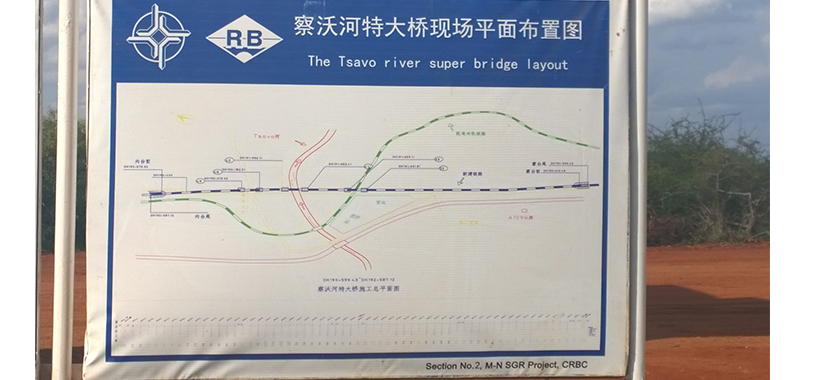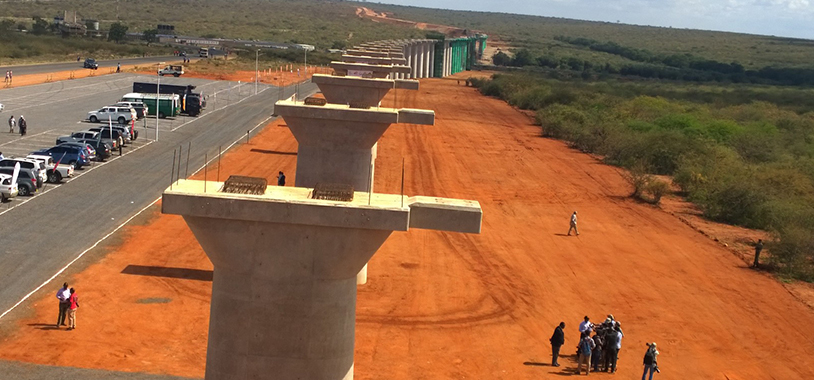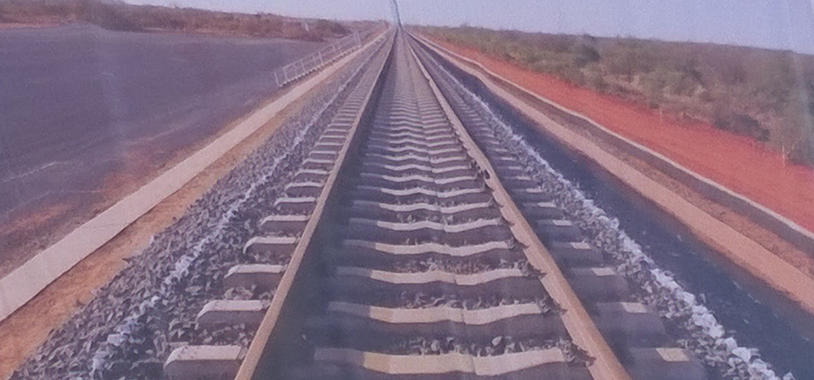Conserving land and ecosystem connectivity for wildlife is increasingly becoming a global challenge as the pace of infrastructure development increases in many traditional wildlife areas. The survival of wildlife species in arid and semi-arid environments requires interconnected landscapes, as ecological constraints in such systems require mobility to allow species access to widely dispersed and variable resources. Previous work demonstrates that limiting animal movement in such systems greatly reduces its carrying capacity for animals. Major infrastructural developments such as multi-line highways and railways can severe wildlife movement often with negative consequences. Wildlife crossing structures are, therefore, a critical tool to maintain landscape connectivity and protect wildlife populations.
A 133 km section of the 483 km long Kenyan Mombasa-Nairobi Standard Gauge Railway currently under construction passes through the Tsavo landscape/ecosystem that comprises Tsavo East, Tsavo West and Chyulu National Parks. In order to fulfil the engineering requirements, the entire railway line will be levelised as much as possible. This means that most of the sections will be raised above the normal ground heights. More so, in order to minimise accident risks, the entire railway line will be fenced off. The height of the railway and the fence along it will create movement barriers for most wildlife. The ecosystem and landscape connectivity between Tsavo East, Tsavo West and Chyulu National Parks along the 133km section of railway will therefore be dependent on the wildlife crossing structures as proposed by Kenya Wildlife Service.
Save the Elephants has been working closely with Kenya Wildlife Service at ensuring that the proposed wildlife crossings are not just adequate in numbers but also purposely designed and located for elephants to use. Save the Elephants attended the inspection by President Uhuru Kenyatta on 26th May 2015 of the railway construction. The President was keen to see firsthand the progress with the construction of the 2km Tsavo River Super Bridge. This bridge is specially designed to not only allow the flow of Tsavo river waters underneath but to also act as one of the underpasses for elephants and other wildlife species between Tsavo East and Tsavo West National Parks.

The layout of the Tsavo river super bridge. The straight dotted line is the super bridge. The winding dotted line is the old existing railway line. The lower continuous double lines is the Mombasa-Nairobi highway; while the crossing double-lines with arrow signs is the Tsavo river
It is very important to understand how elephants and other wildlife species will adapt and learn to use the designated underpasses along the new railway line. For this reason, Save the Elephants and Kenya Wildlife Service are partnering to study elephant movements in this part of Tsavo ecosystem. This study will be based on high-resolution Global positioning System (GPS) satellite tracking of elephants. Analysed movement patterns shall be useful will be useful in understanding landscape by the elephants and in informing future designs and locations of wildlife crossings.
As a way of promoting local tourism, the relatively high Tsavo River Super Bridge will provide an opportunity for a spectacular game viewing from the trains. In order to make game viewing even more spectacular and devoid of animal disturbance, there will be need to re-design the adjacent Nairobi-Mombasa highway. As is currently designed, this highway will restrict free movement of animals that pass under the Super Bridge. It also creates higher accident risks to both wildlife and people (watch our elephants cross the road next to the Tsavo River super bridge). The re-design may require raising the Tsavo-River section of the highway to the height of the Standard Gauge railway line and creating underpasses for elephants and other wildlife species.
The Kenya Roads Board must be made aware, sensitized and lobbied to consider this important need to redesign and reconstruct this section of the Nairobi-Mombasa highway. Similar redesigns should be considered in places where the new Standard Gauge Railway has provided underpasses for wildlife. This will be beneficial to both the animals and the overall tourism economy.

A photo showing the pillars of the 2 km Tsavo River Super Bridge for new Standard Gauge Railway situated within the Tsavo National Park. The bridge has 60 spans with 32m long for each span. The tarmac road on the extreme left is the Nairobi-Mombasa highway separating Tsavo West and East National Parks to the left and to the right respectively. This section of the road should be raised to the height of the Tsavo River Super Bridge to allow for undisturbed movement of wildlife and minimise wildlife road kills


